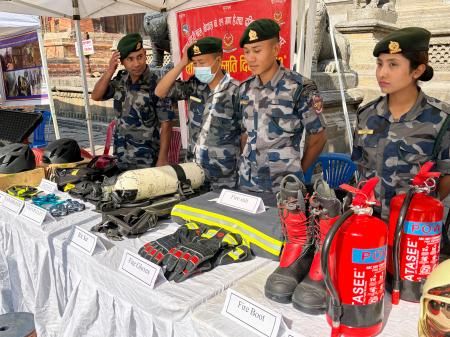Nepal: Disaster Preparedness – A Decade After the Earthquake
The devastating 2015 Nepal earthquake, measuring 7.8 on the Richter scale, left an indelible mark on the nation. Over 8,000 lives were lost, and countless more were impacted by the widespread destruction. A decade later, the focus has shifted from immediate relief to long-term disaster preparedness. This article explores Nepal's progress in building resilience against future seismic events, highlighting both successes and ongoing challenges.
Strengthening Infrastructure: A Foundation for Resilience
One of the key areas of focus has been improving infrastructure to withstand future earthquakes. This involves:
- Seismic Retrofitting: Significant efforts have been made to retrofit existing structures, particularly in urban areas, making them more resistant to earthquake damage. This includes strengthening foundations, improving building materials, and implementing stricter building codes.
- Improved Building Codes: Nepal has updated its building codes, incorporating the latest seismic engineering principles. Enforcement of these codes, however, remains a significant challenge.
- Infrastructure Development: The reconstruction process following the 2015 earthquake has focused on building more resilient infrastructure, including roads, bridges, and hospitals. This is crucial for ensuring rapid response and aid delivery in the event of a future disaster.
Challenges in Infrastructure Development
Despite significant progress, challenges persist:
- Funding Constraints: Securing sufficient funding for large-scale infrastructure projects remains a major obstacle. International aid plays a vital role, but sustainable long-term funding is crucial.
- Implementation Gaps: While new building codes exist, their consistent implementation across the country remains inconsistent, particularly in rural areas. Lack of skilled labor and monitoring mechanisms contribute to this challenge.
- Geographical Constraints: Nepal's mountainous terrain poses significant logistical challenges to infrastructure development and disaster response.
Community-Based Disaster Preparedness: Empowering Local Communities
Beyond infrastructure, Nepal has made strides in community-based disaster preparedness:
- Early Warning Systems: The development and implementation of effective early warning systems are critical. This includes investing in seismic monitoring networks and community-based alert mechanisms.
- Disaster Risk Reduction Education: Educating communities about earthquake preparedness, including evacuation procedures, first aid, and safe shelter options, is paramount. Schools and community organizations play a vital role in disseminating this information.
- Community-Based Search and Rescue: Training local communities in search and rescue techniques is crucial for effective response during the immediate aftermath of an earthquake.
The Role of International Collaboration
International organizations and governments have played a crucial role in supporting Nepal's disaster preparedness efforts. This support includes:
- Financial Assistance: Providing funding for infrastructure development, early warning systems, and community-based programs.
- Technical Expertise: Sharing knowledge and expertise in seismic engineering, disaster risk reduction, and emergency response.
- Capacity Building: Training local personnel in disaster management and building resilience within communities.
Looking Ahead: Sustaining Progress and Building Resilience
Nepal's journey towards enhanced disaster preparedness is ongoing. Sustained commitment from the government, international partners, and local communities is essential to building a more resilient nation. Addressing the challenges related to funding, implementation, and geographical constraints is crucial for long-term success. Continuous investment in infrastructure, community-based programs, and capacity building will determine Nepal's ability to effectively mitigate the impact of future earthquakes.
Further Reading:
- [Link to a relevant government website on disaster preparedness in Nepal]
- [Link to a reputable NGO working on disaster relief in Nepal]
- [Link to a scientific article on earthquake preparedness in mountainous regions]
Call to Action: Learn more about how you can support Nepal's disaster preparedness efforts. Consider donating to reputable organizations working in the region or volunteering your time and skills.
